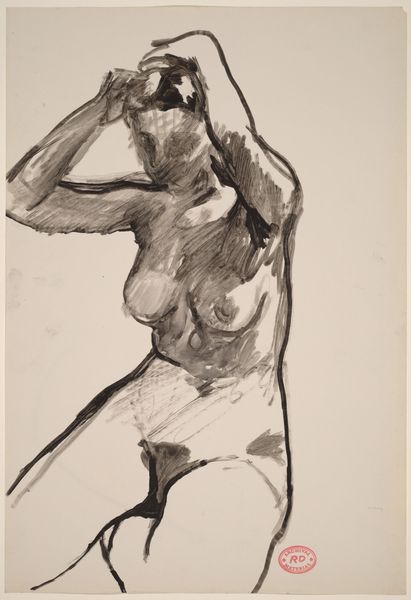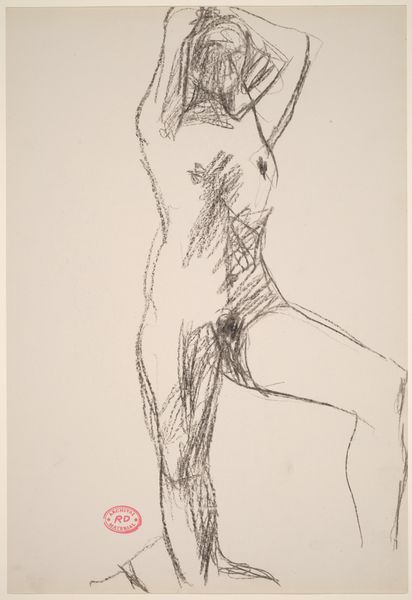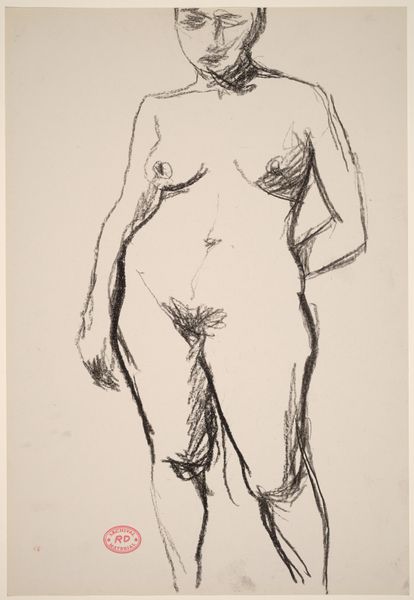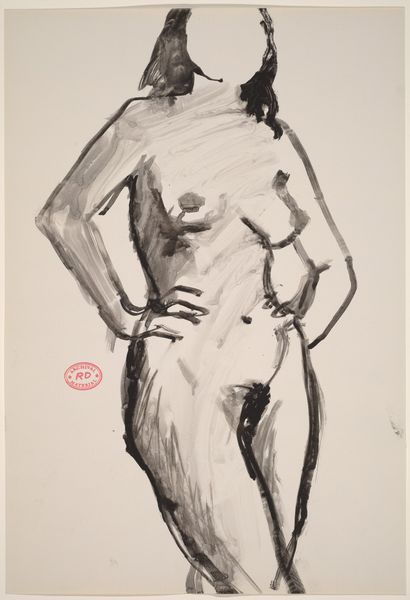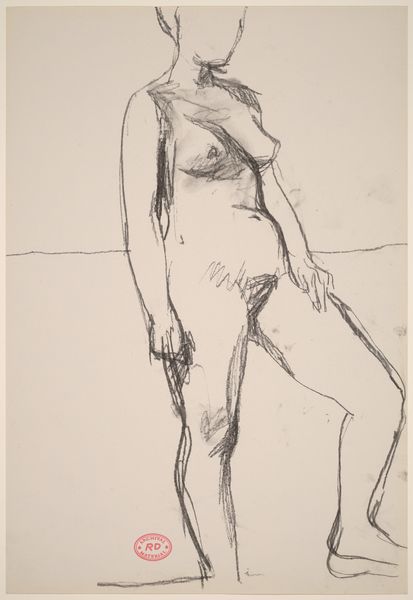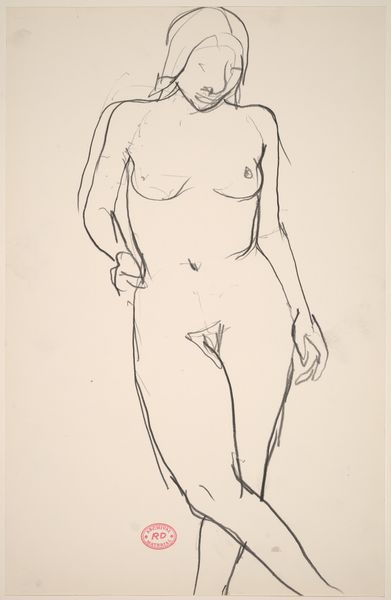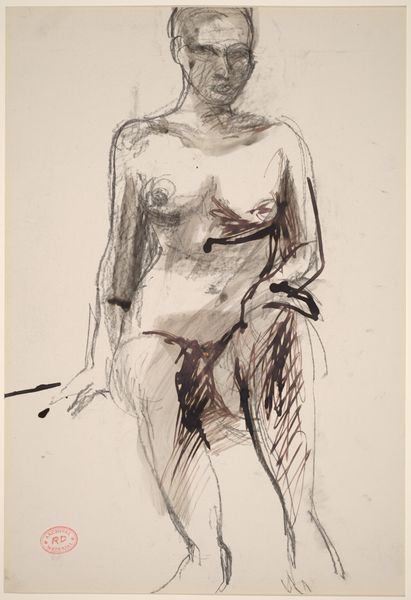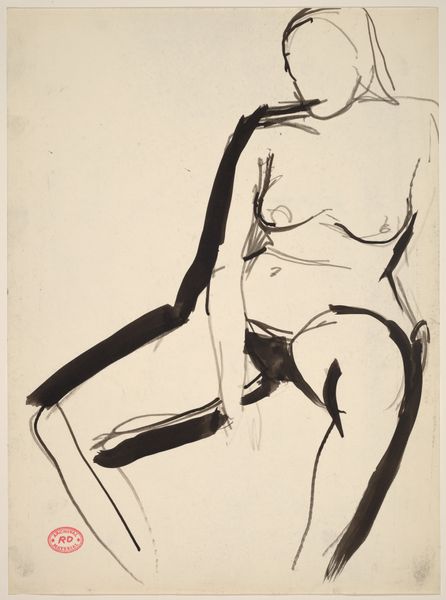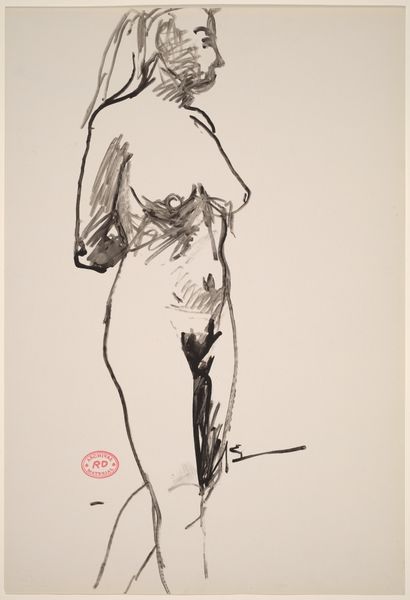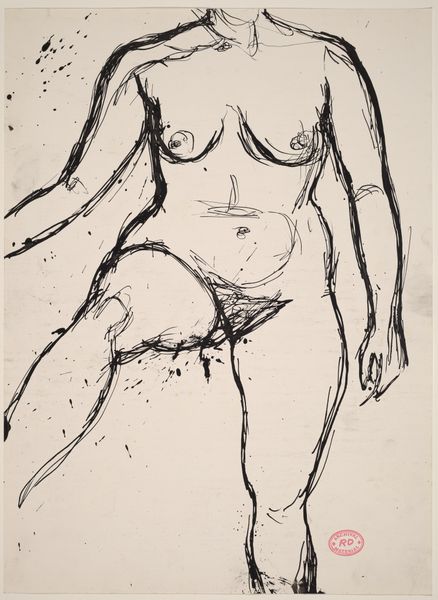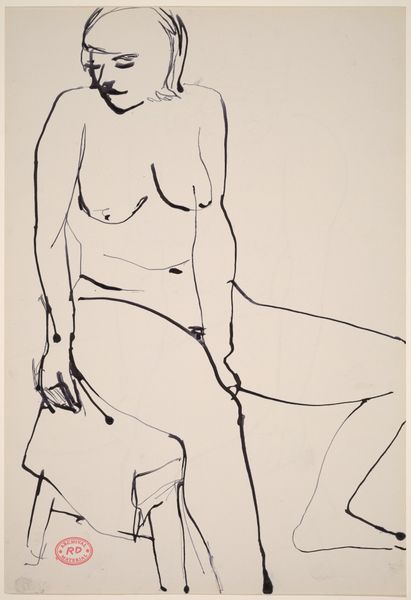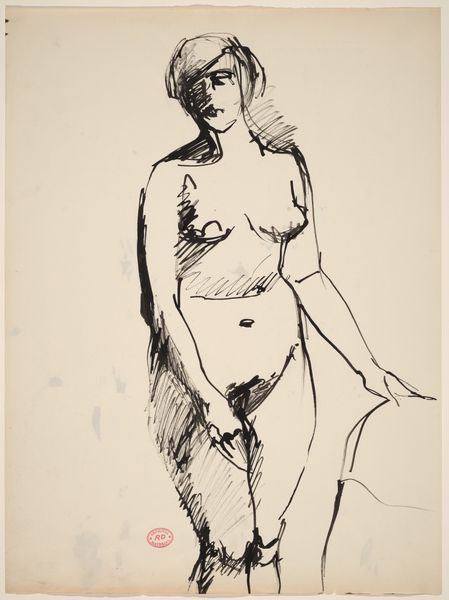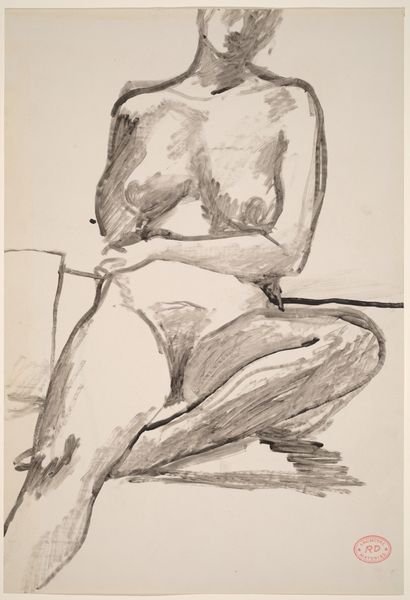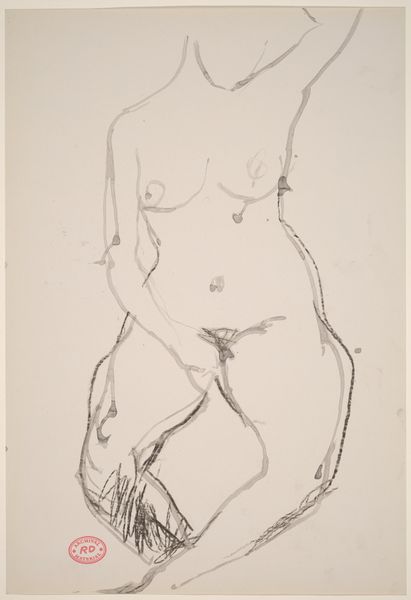![Untitled [front view of a standing female nude] by Richard Diebenkorn](/_next/image?url=https%3A%2F%2Fd2w8kbdekdi1gv.cloudfront.net%2FeyJidWNrZXQiOiAiYXJ0ZXJhLWltYWdlcy1idWNrZXQiLCAia2V5IjogImFydHdvcmtzL2U0MTM2M2NkLTQzYjEtNGJjZi04YTQwLWJlYWRjZTNhY2M0NC9lNDEzNjNjZC00M2IxLTRiY2YtOGE0MC1iZWFkY2UzYWNjNDRfZnVsbC5qcGciLCAiZWRpdHMiOiB7InJlc2l6ZSI6IHsid2lkdGgiOiAxOTIwLCAiaGVpZ2h0IjogMTkyMCwgImZpdCI6ICJpbnNpZGUifX19&w=3840&q=75)
Untitled [front view of a standing female nude] 1955 - 1967
0:00
0:00
drawing, ink
#
abstract-expressionism
#
drawing
#
figuration
#
bay-area-figurative-movement
#
ink
#
nude
#
modernism
Dimensions: overall: 54.6 x 39.1 cm (21 1/2 x 15 3/8 in.)
Copyright: National Gallery of Art: CC0 1.0
Curator: This ink drawing from Richard Diebenkorn, made sometime between 1955 and 1967, offers a strikingly simplified take on the female nude. What catches your eye first? Editor: The fluidity of the ink. It gives the figure a sense of effortless movement, like she’s caught mid-pose. It’s both classical and yet so immediate, raw even. There's vulnerability here. Curator: Indeed. The quick, gestural lines belie the complex dialogue Diebenkorn was having with tradition and the avant-garde. Post-war America saw a real questioning of representation. Artists weren’t content with simply mirroring reality. Editor: Right. And nudes, historically, were so loaded. Here, it’s like he’s stripped away layers of idealization. There's no Aphrodite, no Venus. What we are given here is something far more relatable, in that it seems human. How do you think it fit within the art world back then? Curator: The piece definitely sits within the nexus of Abstract Expressionism, where there was this great struggle to capture subjective experiences. However, he eventually moved into a more representational space while grappling with flatness and the interplay of color. This feels like a critical bridge. While other Abstract Expressionists were scaling to mural size to confront the canvas physically, Diebenkorn retains a recognizable figurative element here, while testing out pure expression of materials. Editor: The bold use of shadow really adds to the visual drama. But it's more than just light and shadow. It suggests psychological weight as well, those heavier strokes lending a feeling of contemplation. What do you think influenced Diebenkorn to explore this imagery? Curator: His artistic background was one rooted in access to university art programs where the figure and especially the female nude still held considerable artistic weight. In the Bay Area specifically, there was a tradition of academic instruction which carried over and influenced many in his circle. Editor: I think there's a reason this kind of image has resonated across cultures and epochs. Beyond simple form, these lines become something profoundly human and lasting. Curator: Absolutely, something elemental seems to persist. We find that the symbolic charge continues to hold sway over time and even through various aesthetic movements.
Comments
No comments
Be the first to comment and join the conversation on the ultimate creative platform.
